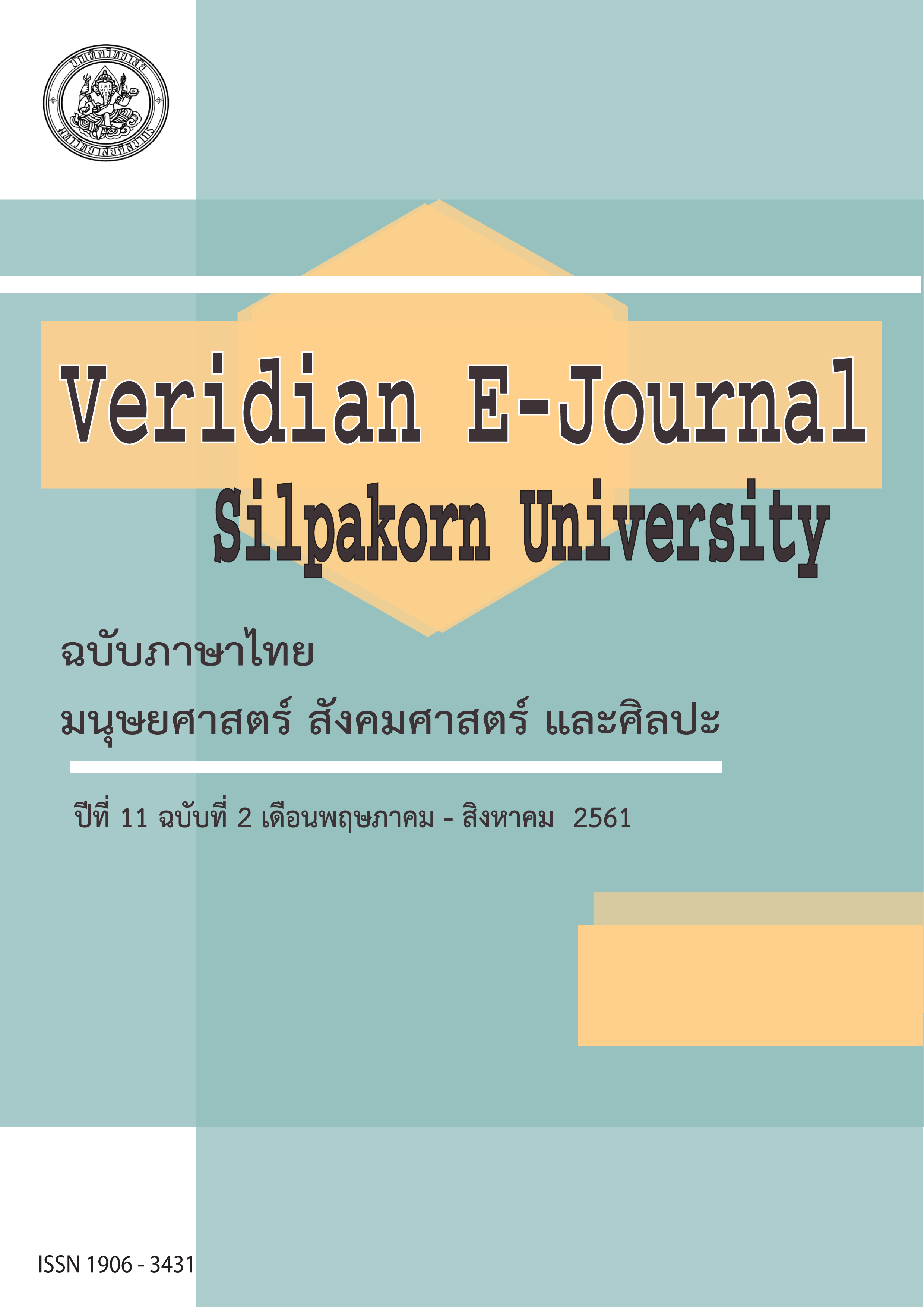รูปแบบการบริหารจัดการความขัดแย้งในพระพุทธศาสนา : วิเคราะห์จากพระไตรปิฎก (Conflict Management Model in Buddhism : From the analysis of the Tipitaka)
Main Article Content
Abstract
รูปแบบการบริหารจัดการความขัดแย้งในพระพุทธศาสนา : วิเคราะห์จากพระไตรปิฎกเป็นการวิเคราะห์ข้อมูลโดยใช้วิธีการวิจัยเชิงประวัติศาสตร์ โดยมีวัตถุประสงค์ดังนี้ 1) เพื่อศึกษาหลักการและกระบวนการบริหารจัดการความขัดแย้งในพระพุทธศาสนาที่ปรากฏในพระไตรปิฎก 2) เพื่อศึกษารูปแบบการบริหารจัดการความขัดแย้งในพระพุทธศาสนาและหลักธรรมที่ปรากฏในพระไตรปิฎก และ 3) เพื่อนำเสนอแนวทางการนำหลักธรรมไปประยุกต์ใช้ในการบริหารจัดการความขัดแย้ง แหล่งข้อมูลที่ทำการศึกษาวิจัย คือ พระไตรปิฎก ภาษาไทย ฉบับมหาจุฬาลงกรณราชวิทยาลัย พุทธศักราช 2539 จำนวน 45 เล่ม เครื่องมือที่ใช้ในการวิจัย คือ แบบวิเคราะห์เอกสาร
ผลการวิจัยพบว่า
- หลักการและกระบวนการจัดการความขัดแย้งในพระพุทธศาสนาที่ปรากฏในพระไตรปิฎก ประกอบด้วย 15 วิธีการ ได้แก่ 1) การลงโทษ 2) การบัญญัติพระวินัย 3) การพึ่งพาตนเอง 4) การใช้สติปัญญา 5) การวางตัวเป็นกลาง 6) การใช้อิทธิปาฏิหาริย์ 7) การเผชิญหน้า 8) การหลีกเลี่ยง 9) การเจรจา 10) การประนีประนอม 11) การให้รางวัล 12) การใช้กุศโลบาย 13) การพิสูจน์ความจริง 14) การใช้กฎแห่งธรรมชาติ และ15) การใช้หลักศาสนาและวัฒนธรรม
- รูปแบบการบริหารจัดการความขัดแย้งในพระพุทธศาสนามี 4 รูปแบบ ประกอบด้วย 1) รูปแบบของไตรสิกขา 2) รูปแบบของโอวาท 3 3) รูปแบบของพรหมวิหาร 4 และ 4) รูปแบบอริยสัจ 4 แต่ในงานวิจัยนี้จะใช้รูปแบบของอริยสัจ 4 คือ ทุกข์ (ทุกข์) สาเหตุแห่งทุกข์ (สมุทัย) ความดับทุกข์ (นิโรธ) และหนทางแห่งความดับทุกข์ (มรรค) และหลักธรรมที่นำมาสนับสนุนการบริหารจัดการความขัดแย้งในพระพุทธศาสนาให้เกิดผลสัมฤทธิ์ ประกอบด้วยหลักธรรมดังต่อไปนี้ 1) หลักขันติธรรม 2) หลักสามัคคี 3) หลักไตรสิกขา 4) หลักวจีสุจริต 5) หลักพละ 6) หลักพรหมวิหาร 7) หลักฆราวาสธรรม 8) หลักสังคหวัตถุ 9) หลักจักรวรรดิวัตร 10) หลักสาราณียธรรม 11) หลักโยนิโสมนสิการ และ 12) หลักกาลามสูตร
- แนวทางการนำหลักธรรมไปประยุกต์ใช้ในการบริหารจัดการความขัดแย้ง พบว่าหลักธรรมที่สนับสนุนการบริหารจัดการความขัดแย้งในพุทธศาสนาเท่าที่สืบค้นได้จากพระไตรปิฎก สามารถนำมาบูรณาการใช้เป็นวิธีในการแก้ไขปัญหาความขัดแย้งต่างๆ ที่เกิดขึ้นในสังคม ให้ยุติลง สร้างสันติสุข สันติภาพขึ้นมาทดแทน เพื่อการอยู่ร่วมกันในสังคมได้อย่างมีความสุข จำแนกออกเป็น 4 หมวด ได้แก่ 1) พื้นฐานการดำเนินชีวิต ประกอบด้วยหลักขันติธรรม สามัคคีธรรม วจีสุจริต และพรหมวิหารธรรม 2) พัฒนาคุณภาพชีวิต ประกอบด้วยหลักไตรสิกขา พละธรรม และฆราวาสธรรม 3) ตอบสนองชุมชน สังคม และประเทศชาติ ประกอบด้วยหลักสังคหวัตถุและจักรวรรดิวัตร และ 4) เกื้อกูล/เยี่ยวยา/รักษาวิกฤตการณ์โลก ประกอบด้วยหลักสาราณียธรรม โยนิโสมนสิการ และกาลามสูตร
Conflict Management Model in Buddhism: Analysis from the Tipitaka. This research applied the historical research wethed. The purposes of this study were : 1) to study the principles and processes of conflict management in Buddhism, which appear in the Tipitaka, 2) to study the conflict management model of Buddhism and the Buddhist principles which support conflict management in Buddhism appeared in the Tipitaka, and 3) to Introduce the principle of applying the principles to the management of conflict. The source of the study is the Thai Buddhist Tipitaka, Mahachulalongkornrajavidyalaya, B.E. 2539, 45 copies. The research instrument was a document analysis sheet.
The research results were as follows :
- Principles and processes of conflict management in Buddhism composed of 15 methods included : 1) the punishment, 2) the formulation of discipline, 3) the self-reliance, 4) the use of intelligence, 5) the neutrality, 6) the virtue of the miracle, 7) the Confrontation, 8) the avoidance, 9) the negotiation, 10) the compromise, 11) the reward, 12) positive simplicity, 13) proof of truth, 14) use of natural law and 15) The use of religions principles and culture.
- The Conflict Management Models founded in Tipitaka analysis were Tisikkhà, were Ovàda, were Brahmavihàra, were Ariyasaaca, in which this study will concentrate in the Four Noble Truths wich composed of Suffering (Dukkha), The Cause of Suffering (samudaya), The cessation of suffering (nirodha), and prescription of the remedy (Magga). And Buddhist principles to support the management of conflict in Buddhism founded were 1) Khanti 2) Samaggi 3) Sikkhà 4) Vacã-sucarita 5) Bala 6) Brahmavihàra 7) Gharàvàsa-dhamma 8) Saïgahavatthu 9) Cakkavatti-vatta 10) Sàraõãyadhamma 11) Yonisomanasikàra 12) Kàlàmasutta.
- Guidelines for applying principles to conflict management. The principle that supports conflict management in Buddhism, as found by the Tipitaka. Can be used as a way to resolve conflicts. To occur in society to cease to create peace. Peace up to live together in society happily classified into 4 ways: 1) Basic ways of life included : Khanti, Samaggi, Vacã-sucarita, Brahmavihàra 2) develops the quality of life included : Sikkhà, Bala, Gharàvàsa-dhamma 3) responding to the community, society and nation included : Saïgahavatthu, Cakkavatti-vatta and 4) supporting / curing the world crisis included : Sàraõãyadhamma, Yonisomanasikàra, Kàlàmasutta.

